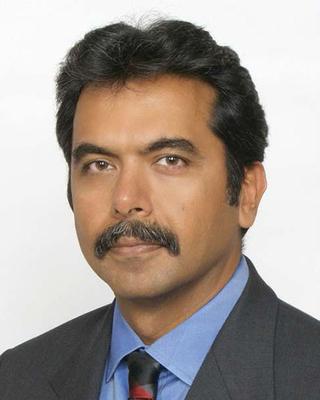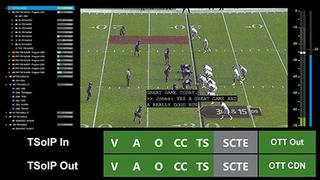Broadcasters’ ‘Secret Sauce’ for Big Data
ALEXANDRIA, VA.—Even as technology changes the way broadcasters operate, some legalities remain little changed. Broadcasters still have a legal requirement to log all broadcast content and ensure that the content is compliant with existing federal regulations.
“The need for compliance loggers comes from the legal requirement to log all broadcasted content, and this need, arising from the national telecom regulators, such as the FCC, has not changed,” said Ken Frommert, president of ENCO in Southfield, Mich.
Moreover there has been ever-increasing economic pressure on broadcasters as content distribution has become fragmented, coupled with the fact that compliance loggers in essence remain mostly an economic liability with no real business benefit. This has forced what Frommet called a “technological evolution”—that could allow broadcasters to utilize the enormous amounts of data created by the loggers.
“This ‘big data’ is just sitting there for months until it is deleted and replaced by newer data, with no effective use, while the technologies are gradually enriching the value of these video records and adding a number of useful functions,” he said.
KEEPING UP
As the industry faces consolidation, there are fewer players catering to the requirements of broadcasters as well as to OTT and MVPD operators.

Hiren Hindocha, CEO of Digital Nirvana
“Every year, there are new challenges and new requirements, and it demands a constant focus from the vendors to keep up, said Hiren Hindocha, CEO of Digital Nirvana in Fremont, Calif. “As OTT takes its rightful place beside broadcast, the need to monitor OTT becomes more important. While the broadcast industry can be considered mature, the same can’t be said about the OTT industry/vertical. There are many vendors providing solutions for different parts of the workflow.”
Get the TV Tech Newsletter
The professional video industry's #1 source for news, trends and product and tech information. Sign up below.
As a result there can be much more to monitor including encoder status, start/stop streaming and monitoring of web site accessibility as well as quality control analysis. OTT confidence and compliance monitoring can also be done utilizing cloud-based monitoring services, while many network monitoring applications can also be used to monitor the process involved with OTT workflows across the content delivery network (CDN).
“Most clients monitor pre-CDN and post-CDN as a confidence check measure,” Hindocha said. “Some monitor at the end user level with embedded monitoring in the apps on the user devices.”
Compliance logging has seen a significant evolution over the past decade, but as the broadcast world becomes more cloud-and IT-based, challenges will remain in how logging is handled.
“Logging and compliance has come a long way since the early days of VHS,” said Mark Horchler, senior vice president of marketing at Mediaproxy in San Diego. “The capabilities of today’s software-based solutions, such as LogServer, are enabling broadcasters to manage and repurpose their video content, including metadata, for a wide variety of services including advertising and social media.”
At the same time, there has been increased regulatory and industry scrutiny that has been coupled with a growing plethora of viewing devices and outlets including OTT.
“Broadcast engineers now need to log and monitor multiple streams of video and metadata from each broadcast source,” added Horchler. “This challenge is being met by software-based loggers that can quickly address new formats and standards. The scalability and flexibility of software-based logging enables broadcasters to stay one step ahead of regulators and develop innovative revenue-generating services.”
NEW OPPORTUNITIES
The improvements that have come via software advances could help resolve issues on the regulatory side and create new opportunities for increased revenue.

Russell Wise, vice president of video solutions for Verizon Digital Media Services
“There remains a requirement to archive the data from compliance logging for seven years, and technology has made it easier to do so,” said Russell Wise, vice president of video solutions for Verizon Digital Media Services. “However, in recent years it has evolved into a tool set, which ensures compliance not only for the FCC, but can also allow broadcasters to produce better content. In this way compliance loggers are becoming more of a collaborative tool, not just an appeasement tool.”
For these reasons many broadcasters are now using compliance products to help in the production of content for OTT and other line services, added Wise. “The demand for content has gone up 10 times, and these tools help deliver it to the quality that the viewer expects.”
Software-based logging systems have provided the scalability and flexibility to help broadcasters to stay ahead of regulators, while also developing innovative revenue-generating services; and have also been a valuable tool for reviewing content and much more.
“Web-based user interfaces, now with HTML-5, offer distributed deployment, while multichannel capture and streaming can be integrated within broadcast automation logs and social media platforms,” said Horchler. “Software-based logging and compliance solutions such as LogServer can be scaled up and configured in tandem with broadcast expansion. Instead of working as a parallel function, software logging and compliance can be tightly integrated as part of an overall broadcast production and content delivery workflow.”

Mediaproxy’s Monwall provides monitoring of live streams from broadcast and OTT sources, and show both live video and real-time metadata being simultaneously monitored for compliance.
Additionally, as MVPDs and OTT operators respond to changing consumer habits, the opportunities to monetize on-demand content are evolving.
“Broadcasters are keeping track of metadata including ad-insertion points across multiple video streams,” added Horchler. “Mediaproxy’s extensive live stream monitoring and post-broadcast reporting tools are designed to address these requirements. Unlike hardware-based systems, logging and compliance software can be efficiently scaled in line with new service rollouts. A broadcaster can instantly allocate either on-premise or cloud-based resources for temporary coverage of major sports events.”
Mediaproxy’s headend encoders even deliver IP transport stream alongside traditional ASI outputs, while its LogServer software further enables logging and real-time analysis of both outgoing and return feeds to capture the end-viewer experience and instantly resolve on-air incidents.
In addition, the exponential development of social media and of clips for OTT presents new opportunities for broadcasters.
“The compliance loggers have the advantage of compressing the linear TV feeds into proxies of smaller size,” said ENCO’s Frommert. “These proxies are much more suitable for distribution on social media and for VOD in general. We believe that it is possible to use the ‘necessary evil’ of compliance loggers and obtain valuable data and resources that can be monetized into competitive information, such as ads income, and better and faster clips for OTT and social media.” This can include improved automated detection of commercial ad spots, and replace what has been manually intensive work. As a result this technology can scan many channels and provide very accurate affidavit reports on the number of ad spots.
“The ads watching technology can also analyze competing TV and radio channels and provide comparisons channel to channel on the number of ads sold and aired,” Frommert said. “Some TV networks are using the content detection technology, coupled with viewership data to obtain insight on the relative success of one program or another on the number of viewers of the same channel. The fact that the program managers can view the real-time viewer’s charts just above the actual recording of the TV feeds of competing channels, makes it much easier to get the right feel on what works and what is rejected by the viewers.”
